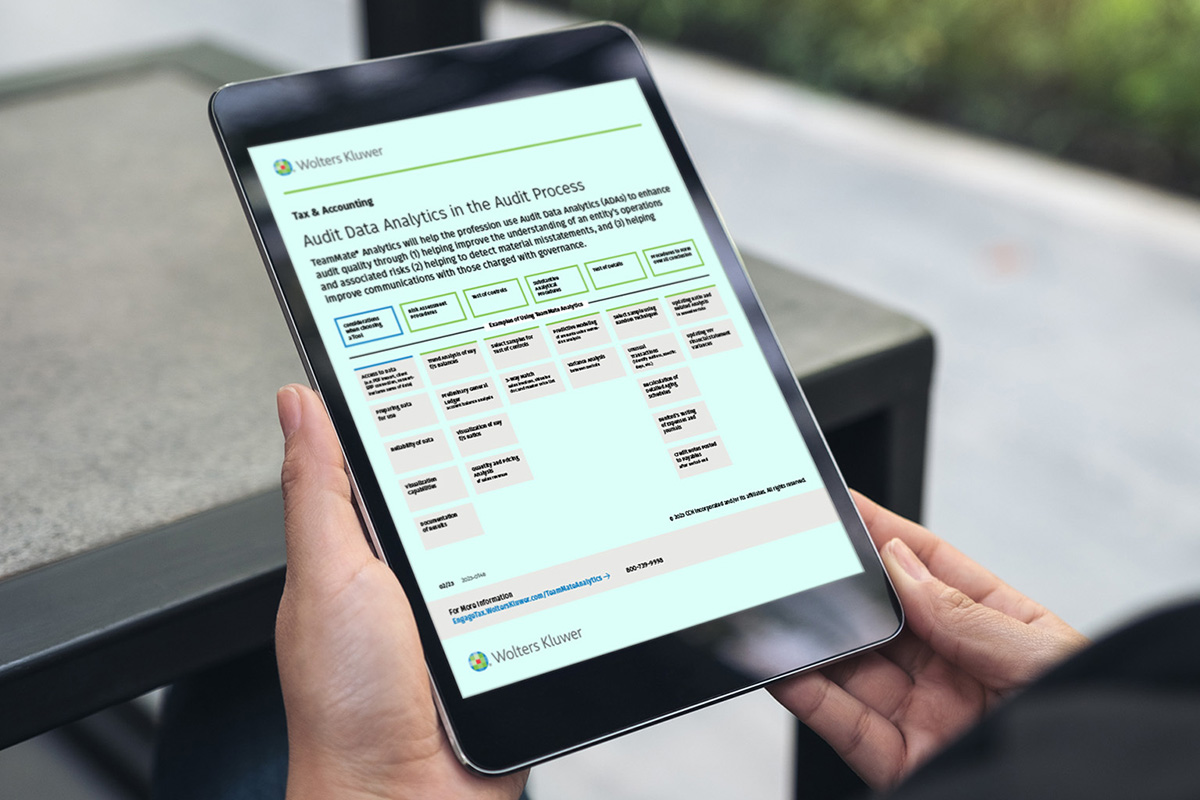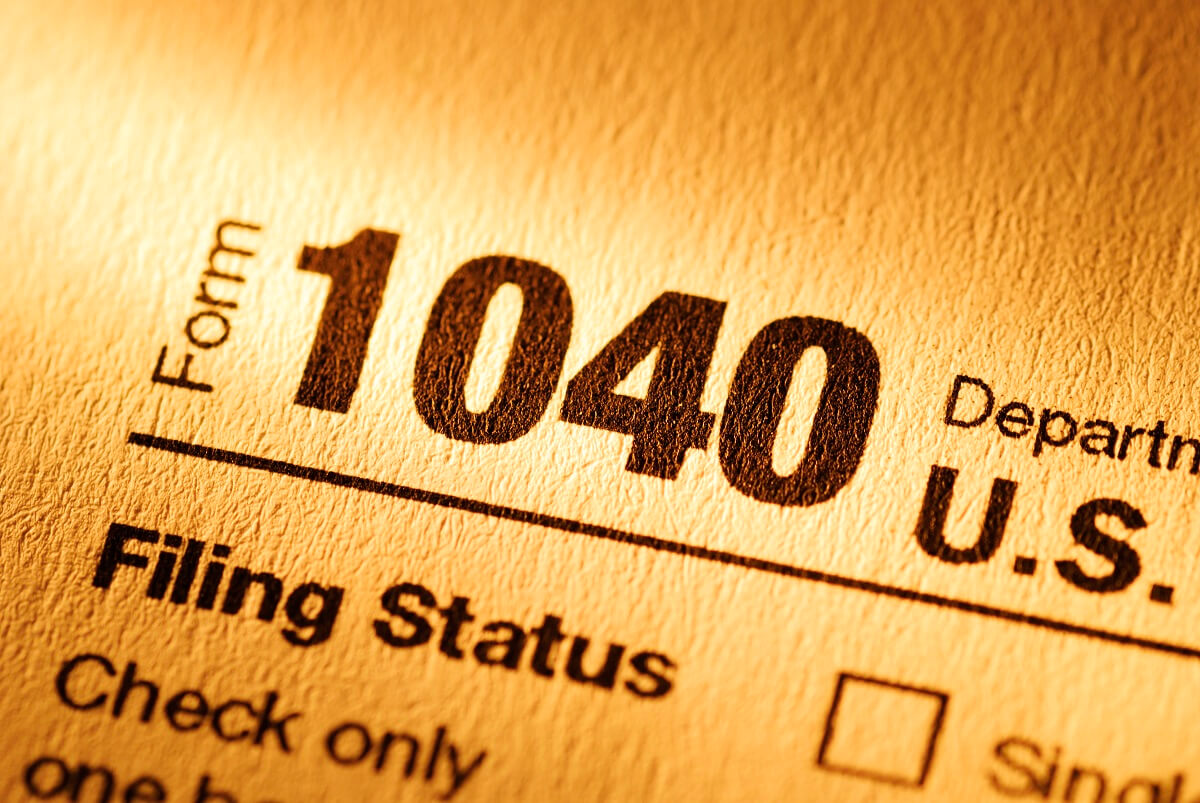

Finance
How Do You Display Auditing Data
Published: December 28, 2023
Learn how to effectively display auditing data in finance. Find out the best practices and tools to streamline your financial analysis and reporting.
(Many of the links in this article redirect to a specific reviewed product. Your purchase of these products through affiliate links helps to generate commission for LiveWell, at no extra cost. Learn more)
Table of Contents
Introduction
Welcome to the world of auditing data! In today’s fast-paced and data-driven business environment, the need for accurate and transparent auditing is more crucial than ever before. Auditing data refers to the process of examining and verifying financial records, transactions, and other relevant information to ensure compliance, detect errors, and mitigate risks.
In the realm of finance, auditing data plays a vital role in maintaining the financial integrity of organizations. It provides stakeholders, including investors, shareholders, and regulatory bodies, with the confidence and assurance that financial statements are reliable and accurate. Effective auditing practices not only enhance corporate governance but also promote trust and credibility among key stakeholders.
However, the mere act of auditing data is not enough. It is equally important to display auditing data in a comprehensive and understandable manner. The way auditing data is presented and communicated can greatly impact its effectiveness and usefulness. It is through effective display that complex financial information can be transformed into meaningful insights and actionable intelligence.
The purpose of this article is to explore the various aspects of displaying auditing data effectively. We will delve into the importance of displaying auditing data, the challenges faced in doing so, best practices to follow, common mistakes to avoid, and the tools and technologies available to assist in the process. Additionally, we will highlight real-world case studies to provide practical examples of successful display of auditing data.
Whether you are a financial professional, a business owner, or simply someone interested in understanding how auditing data can be effectively communicated, this article will provide you with valuable insights and actionable tips to enhance your knowledge and skills in this field.
Importance of Displaying Auditing Data
Displaying auditing data effectively is of paramount importance as it plays a crucial role in ensuring transparency, accountability, and informed decision-making within organizations. Here are some key reasons why effectively displaying auditing data is essential:
- Transparency: Transparency is the cornerstone of good corporate governance. By displaying auditing data in a clear and concise manner, organizations demonstrate their commitment to transparency. This allows stakeholders such as investors, shareholders, and regulatory bodies to gain a comprehensive understanding of the financial health of the organization. Transparent auditing data fosters trust, builds credibility, and enhances the overall reputation of the company.
- Compliance: Compliance with financial regulations is crucial for organizations, especially those in highly regulated industries such as banking and insurance. Displaying auditing data in compliance with relevant regulatory standards ensures that organizations meet legal requirements and avoid penalties and fines. Effective display of auditing data enables organizations to easily demonstrate their compliance and adherence to industry-specific regulations.
- Risk Mitigation: Displaying auditing data can help identify potential risks and vulnerabilities within an organization. By analyzing financial data and identifying patterns and anomalies, organizations can proactively mitigate risks and prevent financial fraud. Timely detection and resolution of these risks can save organizations from financial loss, reputational damage, and legal troubles.
- Decision-Making: Accurate and well-presented auditing data provides decision-makers with the information they need to make informed strategic decisions. It allows them to identify areas of strength and weakness, analyze financial performance, and assess the impact of different scenarios on the organization. Displaying auditing data in a visual and intuitive manner enables decision-makers to quickly grasp the key insights and act accordingly.
- Investor Confidence: Investors rely on auditing data to evaluate the financial health and viability of potential investment opportunities. When the auditing data is effectively displayed, it instills confidence in investors by providing them with a clear understanding of the organization’s financial position, profitability, and growth prospects. This, in turn, attracts more investment and contributes to the overall growth and success of the organization.
In summary, effectively displaying auditing data is crucial for promoting transparency, ensuring compliance, mitigating risks, facilitating informed decision-making, and building investor confidence. By implementing best practices and leveraging appropriate tools and technologies, organizations can enhance the value and impact of their auditing data, driving better outcomes and success.
Challenges in Displaying Auditing Data
While displaying auditing data is essential, it comes with its fair share of challenges. Here, we explore some of the common challenges faced in effectively displaying auditing data:
- Data Complexity: Auditing data can be complex and voluminous, especially in large organizations with multiple departments and systems. Consolidating and organizing this data to present a coherent picture can be a daunting task. Dealing with diverse data sources, data quality issues, and data inconsistencies adds to the complexity.
- Multiple Stakeholders: Different stakeholders have different information needs when it comes to auditing data. Investors may be interested in financial performance metrics, while regulators may require compliance-related information. Effectively displaying auditing data to cater to the needs of various stakeholders and ensuring that the right information is presented can be challenging.
- Technical Expertise: Displaying auditing data often requires technical expertise and knowledge of data visualization tools and techniques. Understanding how to effectively communicate financial information visually and select the appropriate visualization methods can be a challenge for individuals without a background in data analytics or visual communication.
- Data Security: Audit data is highly sensitive and confidential. Ensuring the security and integrity of the data while displaying it is of utmost importance. Organizations need to implement robust security measures to protect against unauthorized access, data breaches, and manipulation.
- Keeping Up with Changes: Audit data is not stagnant; it constantly evolves and changes over time. Keeping up with the dynamic nature of auditing data and ensuring that the displayed information is up to date can be challenging. Regularly updating and refreshing the displayed data requires efficient processes and reliable data management systems.
Addressing these challenges is crucial for organizations to effectively display auditing data. By implementing best practices, leveraging advanced data management and visualization tools, and ensuring data accuracy and security, organizations can overcome these challenges and derive maximum value from their auditing data.
Best Practices for Displaying Auditing Data
Effectively displaying auditing data requires careful consideration of various factors to ensure clarity, accuracy, and ease of understanding. Here are some best practices to follow when displaying auditing data:
- Define the Audience: Understand the intended audience for the displayed auditing data. Different stakeholders have different needs and interests. Tailor the information and presentation style to match their requirements. Consider aspects such as level of detail, visual representations, and terminology used.
- Use Clear and Concise Visualizations: Utilize visualizations such as charts, graphs, and tables to present auditing data in a concise and intuitive manner. Choose appropriate visualization methods based on the nature of the data and the intended message. Use labels, titles, and captions to provide context and make the information easily understandable.
- Focus on Key Metrics: Identify and highlight the key metrics and insights that are most relevant to the audience. Prioritize displaying the most important information prominently to capture attention and facilitate quick understanding.
- Ensure Data Accuracy: Accuracy and integrity of the displayed auditing data is critical. Regularly validate and verify data sources to ensure completeness and correctness. Implement data quality controls and perform regular audits to maintain data accuracy.
- Balance Visualization and Explanation: While visualizations are powerful tools, providing additional context and explanatory notes is essential. Supplement visualizations with text-based explanations to provide a comprehensive understanding of the auditing data.
- Use Interactive Features: Incorporate interactive features into the displayed auditing data to allow users to explore and analyze the information on their own. Interactive filters, drill-down capabilities, and sorting options enable users to gain deeper insights and customize their view.
- Ensure Consistency and Standardization: Establish consistent standards and formats for displaying auditing data across the organization. This promotes ease of comparison and consistency in reporting, making it easier for stakeholders to understand and interpret the data.
- Design for Mobile and Web: Consider the display of auditing data on different platforms, including mobile devices and web interfaces. Ensure that the visualizations are responsive and optimized for various screen sizes to facilitate access and usability.
- Seek Feedback: Regularly solicit feedback from stakeholders regarding the displayed auditing data. This helps identify areas for improvement and ensures that the information provided is relevant and useful.
By following these best practices, organizations can effectively display auditing data in a manner that is clear, accurate, and actionable. This enhances transparency, promotes informed decision-making, and strengthens stakeholder trust and confidence.
Common Mistakes to Avoid in Displaying Auditing Data
While displaying auditing data, it is important to steer clear of common mistakes that can undermine the effectiveness and comprehension of the information. Here are some common mistakes to avoid:
- Overloading with Data: Presenting excessive amounts of data can overwhelm the audience and make it difficult to extract meaningful insights. Avoid displaying unnecessary or irrelevant data and focus on key metrics and relevant information that support the intended message.
- Using Complex Visualizations: Complicated and convoluted visualizations can confuse the audience and hinder their understanding of the auditing data. Avoid using overly complex charts or graphs and opt for clear, simple, and intuitive visualizations that effectively convey the intended message.
- Lack of Context: Displaying auditing data without providing the necessary context can lead to misinterpretation. Ensure that the data is accompanied by clear explanations, definitions of terms, and references to relevant benchmarks or industry standards for proper comprehension and interpretation.
- Ignoring Data Visualization Principles: Neglecting fundamental data visualization principles, such as choosing appropriate color schemes, using clear labels and legends, and maintaining proper scaling, can hinder the audience’s ability to interpret the displayed data accurately. Adhere to data visualization best practices to enhance clarity and readability.
- Disregarding User Experience: Failing to consider the user experience when displaying auditing data can result in a poor and frustrating experience for the audience. Ensure that the displayed data is easily accessible, responsive, and user-friendly across different devices and platforms.
- Failing to Update Timely: Providing outdated or inaccurate data due to infrequent updates can erode the credibility and usefulness of the displayed auditing data. Establish a regular schedule for data updates to ensure that the information remains current.
- Overlooking Data Security: Neglecting data security measures when displaying auditing data can lead to unauthorized access or data breaches. Prioritize data security by implementing appropriate access controls, encryption, and monitoring systems to protect sensitive information.
- Not Seeking User Feedback: Failing to gather feedback from the audience about the displayed auditing data can inhibit continuous improvement. Regularly seek input and insights from stakeholders to identify areas of improvement and ensure that the displayed information meets their needs effectively.
By avoiding these common mistakes, organizations can enhance the clarity, accuracy, and comprehension of the displayed auditing data. This facilitates better decision-making, promotes stakeholder trust, and optimizes the value derived from the auditing process.
Tools and Technologies for Displaying Auditing Data
Advancements in technology have provided organizations with a wide range of tools and technologies to effectively display auditing data. These tools not only simplify the process but also enhance the clarity and impact of the displayed information. Here are some commonly used tools and technologies for displaying auditing data:
- Data Visualization Tools: Data visualization platforms such as Tableau, Power BI, and QlikView enable users to create interactive and visually appealing charts, graphs, and dashboards. These tools provide a wide range of customization options and allow users to easily display auditing data in a compelling and intuitive manner.
- Excel and Spreadsheets: While basic, spreadsheet software like Microsoft Excel remains a popular choice for displaying auditing data. It offers powerful data manipulation and visualization capabilities, making it flexible for organizations to create customized reports and financial statements.
- Business Intelligence (BI) Tools: BI tools like Oracle BI, SAP BusinessObjects, and IBM Cognos provide comprehensive solutions for displaying auditing data. These tools enable organizations to analyze vast amounts of data, create interactive dashboards, and generate insightful reports to support decision-making and compliance requirements.
- Data Analytics Platforms: Advanced data analytics platforms like SAS, R, and Python offer robust capabilities to analyze and display auditing data. These platforms provide sophisticated statistical analysis, predictive modeling, and data visualization features, allowing organizations to derive deeper insights and visualize complex patterns in auditing data.
- Cloud-based Solutions: Cloud-based platforms, such as Google Data Studio and Amazon QuickSight, provide organizations with the flexibility and scalability to display auditing data. These platforms offer collaborative features, automatic data updates, and accessibility across devices, making it easier to share and present auditing data with stakeholders.
- Blockchain Technology: Blockchain technology has the potential to revolutionize the way auditing data is displayed and verified. With its decentralized and immutable nature, blockchain-based solutions can enhance transparency, traceability, and integrity of auditing data, providing stakeholders with greater confidence in the displayed information.
- Mobile Apps: Mobile applications specifically designed for displaying auditing data on smartphones and tablets provide users with convenience and accessibility. These apps allow stakeholders to access real-time auditing data, track key metrics, and receive notifications, enabling them to make informed decisions on the go.
It is important for organizations to choose the most suitable tools and technologies based on their specific needs, budget, and technical capabilities. By leveraging these tools, organizations can streamline the process of displaying auditing data, enhance data visualization capabilities, and present information in a more impactful and meaningful way.
Case Studies: Successful Display of Auditing Data
Let’s explore a couple of real-world case studies that highlight successful examples of displaying auditing data:
- Case Study 1: Company XYZ’s Interactive Dashboard: Company XYZ, a multinational corporation, implemented an interactive dashboard to display auditing data to stakeholders. The dashboard allowed users to explore financial statements, view key metrics, and drill down into specific areas for detailed analysis. The use of visualizations such as dynamic charts and graphs improved data comprehension and facilitated easy identification of outliers or irregularities. The interactive features also provided users with the ability to filter data based on different dimensions, such as time periods or geographical regions. This enhanced level of customization and interactivity improved stakeholder engagement and enabled more informed decision-making.
- Case Study 2: Government Agency’s Transparency Portal: A government agency established a transparency portal to display auditing data to the general public. The portal provided easily accessible and user-friendly visualizations of government spending, revenue, and compliance information. The use of color-coded charts, infographics, and interactive maps made it simple for citizens to understand and monitor the financial activities of the government. The portal also incorporated data storytelling techniques, leveraging narratives and explanatory notes to provide context and enhance understanding. This transparent and engaging display of auditing data improved public trust, encouraged accountability, and promoted citizen participation in government activities.
These case studies demonstrate how organizations can effectively display auditing data by leveraging interactive dashboards, visualizations, customization features, and data storytelling. By presenting auditing data in a visually appealing and user-friendly manner, these organizations successfully engaged their stakeholders and improved decision-making processes.
While the specific tools and technologies used in these case studies may vary, the common thread was a focus on clear communication, interactivity, and customization to meet the unique needs of their respective audiences.
By following these successful examples and tailoring their approach to their specific organizational goals and stakeholder requirements, organizations can achieve similar success in displaying auditing data.
Conclusion
In the ever-evolving world of finance, displaying auditing data effectively is crucial for transparency, compliance, decision-making, and stakeholder confidence. By following best practices and avoiding common mistakes, organizations can ensure that the displayed auditing data is clear, accurate, and easily understandable.
Through the use of tools and technologies such as data visualization platforms, business intelligence tools, and cloud-based solutions, organizations can enhance the display of auditing data, making it more engaging and impactful. These tools facilitate interactive dashboards, customizable visualizations, and real-time data updates, empowering stakeholders to gain valuable insights and make informed decisions.
Real-world case studies have demonstrated that successful display of auditing data involves tailoring the information to the specific audience, utilizing clear and concise visualizations, providing necessary context, and seeking user feedback. Organizations that implement these strategies can enhance the transparency, trust, and accountability associated with their auditing data.
In conclusion, displaying auditing data is not a mere formality but a powerful way to communicate financial information. By adopting best practices, leveraging the right tools, and continuously improving the display of auditing data, organizations can unlock the full potential of their financial data, meet compliance requirements, and empower stakeholders with accurate and actionable insights.
Remember, effective display of auditing data is not just about presenting numbers and figures—it is about telling a story that promotes transparency, accountability, and informed decision-making for the betterment of organizations and their stakeholders.














